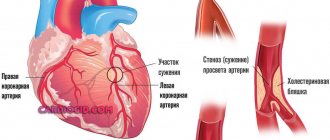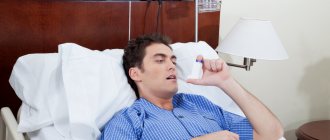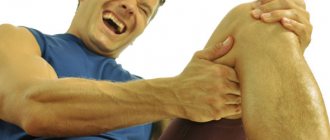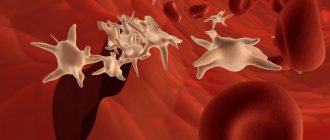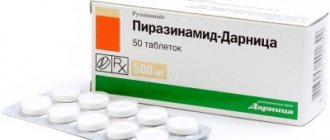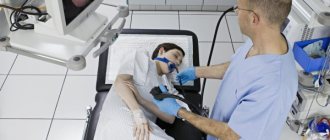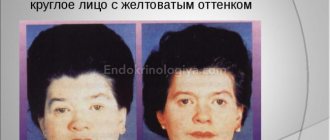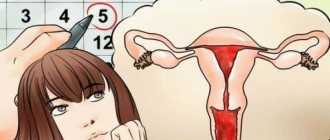Translated, the word “absence” means “disconnection.” Absence seizures in adults are a short-term loss of consciousness. From the outside it may seem that a person is looking into emptiness.
Absence seizures are a mild type of epileptic seizures, but people prone to developing such phenomena should be careful about their own health and try not to find them alone, especially while swimming and interacting with dangerous technical devices. Also, adults suffering from absence seizures are prohibited from driving vehicles and other equipment.
What is characteristic of absence seizure?
Absence is an attack in which a person’s consciousness completely or partially does not respond to the reality around him.
Absence seizures are characterized by the fact that the attack lasts from several seconds to half a minute and is most often not noticed by others. The recovery process also occurs in a few seconds; usually the person continues to do what he was doing before losing consciousness.
At the time of an attack, autonomic disorders sometimes occur - pallor or redness of the skin.
Absence seizure can be characterized by three typical signs for this type :
- The attack lasts no more than a few seconds.
- There is no reaction to external stimuli.
- After an absence seizure, a person believes that everything was fine. That is, the sick person does not remember the attack itself.
A characteristic feature of this type of blackout can be called a large number of absence seizures in both children and adults. Consciousness can turn off from ten to hundreds of times a day.
What types of absence seizures are there?
Many people wonder: “What is absence epilepsy?” There are several main types. Typical or simple is characterized by short-term clouding of consciousness. The victim suddenly stops talking and freezes, as if frozen. At the same time, the gaze is directed clearly in front of you, and facial expressions do not change. The patient does not respond to touch, voice, words and other external factors. During the episode, the patient does not answer questions, and his speech breaks down into occasional silence. However, after a couple of seconds, mental activity returns to normal, and there are no memories of what happened, because for the patient himself it goes unnoticed, the victim simply continues the interrupted action.
A characteristic feature is a high frequency, in particularly tense situations reaching several tens and hundreds of seizures per day. They are provoked by the following phenomena:
- active mental activity;
- excessive relaxation;
- hyperventilation;
- lack of sleep;
- flashes of light;
- flickering TV or computer screen.
Absence seizures are manifested by the following clinical picture of simple episodes:
- lasts a matter of seconds;
- the victim has no reaction and is unconscious;
- the person does not notice the attack.
The paroxysm can last 5-30 seconds, during which the patient loses conscious perception of the surrounding world. From the outside, one can notice the lack of a conscious look, the person’s switching off from the activity and a short period of freezing in place. A pronounced episode is caused by a stop in the beginning of speech or actions, as well as an inhibited continuation that occurs before the attack of activity.
In the first case, after the onset of paroxysm, there is a restoration of motor activity and words exactly from the episode where they stopped. The victims characterize this condition as a sudden stupor, loss of memory, loss of reality, trance. In the post-attack time, the patient’s health is normal.
Another type of seizure is more noticeable both for the victim and for others, as it is distinguished by motor and tonic phenomena. Paroxysm occurs with a decrease in muscle activity, which leads to drooping of the head and weakening of the limbs. In rare cases, the patient may slide out of the chair, and with total atony, fall.
Tonic paroxysms are accompanied by muscle hypertonicity. Depending on the location of the lesions, the following may be noticeable:
- body bending;
- flexion and extension of limbs;
- throwing back the head.
An attack with a myoclonic component is characterized by low-amplitude muscle contractions in the form of frequent body jerks. An adult may experience twitching of the corners of the mouth, chin, and eyelids. Myoclonus occurs:
- symmetrical;
- asymmetrical.
Automatisms that occur during an episode can be of the nature of elementary but repetitive movements:
- mumbling;
- swallowing;
- chewing;
- rubbing hands;
- leg swing;
- fastening buttons or buttons.
The frequency of complex ones can vary from several to dozens of times a day. Episodes may be the patient's only manifestation, which is more common in children.
Classification of attacks
Absence seizures are usually classified according to the severity of the leading symptoms:
- Typical absence seizures occur without preliminary signs, the patient seems to turn to stone, his gaze is fixed on one point, and the movements made before this stop. Full mental state is restored in a few seconds.
- Atypical absence seizures are characterized by a gradual onset and end and a greater clinical picture. The patient may experience bending of the body, falling of objects from the hands, and automaticity in movements. A decrease in tone often leads to an unexpected fall of the body.
In turn, complex, atypical absence seizures are divided into several forms:
- Myoclonic absence seizures are short-term complete or partial loss of consciousness, accompanied by sharp, periodic tremors throughout the body. Myoclonus is usually bilateral and is most often detected on the face - the corners of the lips, eyelids, and muscles near the eyes twitch. An object in the hands during an attack falls out.
- Atonic absence seizures are characterized by a sharp weakening of muscle tone. This may be accompanied by a fall, after which the patient slowly gets up. Sometimes weakness occurs only in the neck muscles, causing the head to hang down on the chest. In rare cases, during such an attack, involuntary urination is detected.
- Akinetic absence is a complete loss of consciousness combined with immobility of the entire body. Often such absence seizures occur in children under the age of 9 years.
- Absence seizures with vegetative manifestations - in addition to loss of consciousness, this form is characterized by urinary incontinence, sharp enlargement of the pupils, and flushing of the facial skin.
It is also customary to subdivide absence seizures by age:
- absence seizures in children are first recorded before the age of 7 years;
- Juvenile absence seizures are detected in adolescents aged 12-15 years.
Causes of absence seizure
Absence attacks in many cases most often go unnoticed and therefore the nature of their origin is quite difficult to identify.
Some researchers propose a genetic predisposition along with the activation of brain cells at a certain point.
It is also necessary to distinguish between true and false absence. It is easy to remove a false person by touch, treatment, or a sharp shout; while a true patient does not react to external changes.
Possible causes of absence seizure include :
- hereditary predisposition;
- hyperventilation of the lungs, in which the level of oxygen and carbon dioxide changes and the body experiences hypoxia;
- imbalance of essential chemicals in the brain;
- poisoning with toxic substances.
Even in the presence of all these provoking factors, absence does not always develop; the likelihood of blackout increases in the presence of the following diseases:
- with congenital seizure disorder;
- pathologies of the nervous system;
- after encephalitis or meningitis;
- for brain contusions and traumatic brain injuries.
Absence seizure can be one of the characteristic manifestations of epilepsy at any age.
It is useful to know where the main foci of gliosis are located in the brain and why this process develops in the body. In modern environmental conditions and difficult living conditions, hypertensive hydrocephalic syndrome in adults and children is becoming more and more common. How to deal with this phenomenon.
Diagnosis of absence epilepsy
Pathology can manifest itself in the form of a combination of various signs. Seizures may occur with or without loss of consciousness. During the localization of a convulsive attack, muscles twitch, unfamiliar sensations are felt in the body, unconscious influxes of thoughts. Additionally, each age is characterized by certain features of the onset and course of the pathology.
Diagnosis of the disease involves a number of procedures, usually including:
- complete blood count;
- electroencephalography;
- computed tomography;
- magnetic resonance tomography.
The above methods allow the doctor to identify the cause of the disease, as well as determine its type.
One of the most important stages of diagnosis is the initial examination by a doctor. It begins with an analysis of the victim’s complaints; as a rule, the main ones will be:
- clouding of consciousness;
- muscle spasms;
- freezing in place.
By asking clarifying questions, the doctor can find out the frequency of seizures and how they manifest themselves in a particular case.
To make an accurate diagnosis, it is necessary to understand the conditions under which the paroxysm occurred, what symptoms were associated with it, and what happened after it. This information is necessary for differential diagnosis, that is, the process of distinguishing between similar pathologies and filtering out incorrect options. Because the presence of headaches, distortions of perception, and movement disorders can indicate not only illness, but also migraine.
After an oral interview, the doctor proceeds to collecting an anamnesis, which includes:
- information about cases of pathology in close and distant relatives;
- age of onset of seizures;
- and the presence of head injuries or related illnesses.
Already at this stage, the data obtained enable the neurologist to assume the presence or absence of the disease, as well as to outline the direction of the diagnostic process and preferred therapy. However, decisions must also be supported by instrumental and laboratory studies. This will help avoid unintentional mistakes when making a diagnosis.
A blood test is one of the most accessible research methods for many diseases, as it helps to obtain the most accurate data about the state of the human body. Timely identification of various deviations from normal indicators allows effective therapy to begin as soon as possible. The disease can be detected by measuring the amount of electrolytes in the blood plasma. An analysis is also carried out while taking antiepileptic drugs to determine whether the required concentration of the active substance has been achieved.
An electroencephalogram is a harmless diagnostic tool used to evaluate the electrical activity of the brain. The duration of the procedure is from 60 to 90 minutes. During the examination, special electrodes resembling metal circles are placed on the patient's head.
Additionally, a technique is used when an electroencephalogram is performed during sleep. This helps to study the person’s condition in as much detail as possible. The study is carried out not only at the diagnostic stage, but also during the treatment process, to monitor the effectiveness of therapy. If there is a diagnosis, the procedure may be performed more often.
To detect structural disorders of the brain, neuroimaging methods are used:
- computed tomography;
- magnetic resonance tomogram.
These diagnostic procedures are absolutely painless. The most uncomfortable part of the process may be the injection of a contrast agent, which is necessary to ensure that certain areas of tissue are visible in the image as clearly as possible. During the scan, the patient is advised to relax and not make any movements.
Features of absence seizure in children
Absence in children is considered the most common manifestation of an epileptic seizure.
Usually, the first attack is recorded no earlier than 4 years of age, since before this age the formation of activity in parts of the brain occurs.
You can suspect the onset of an attack by similar movements in the hands, smacking lips, and a distant look.
In children - schoolchildren, when several absence seizures are registered per day, a decrease in academic performance, absent-mindedness, and psycho-emotional sphere suffers.
Children with seizures must always be under close attention, since loss of consciousness can happen at the most inopportune moment - when swimming, crossing a busy road, riding a bicycle.
Nonconvulsive absence epilepsy
Pathology occurs much more often at an early age, from 7 to 14 years, and in youth - from 15 to 30 years. Until the age of four, simple absence seizures do not occur in patients, since a certain maturity of the brain is required for the manifestation of this phenomenon.
The trigger mechanism for nonconvulsive neuralgia is:
- neuroinfection;
- skull injuries.
During nonconvulsive paroxysms, gustatory, olfactory and visual hallucinations may occur. A characteristic feature of the disease is a large number of clinical manifestations. Therefore, organic diseases of various etiologies, in the absence of qualified assistance, tend to become chronic.
Clinical manifestations
The first characteristic sign of absence seizure is considered to be a disturbance of consciousness, expressed in its complete shutdown or clouding.
While making movements, a sick person may suddenly stop, and the facial expression does not change, the gaze is directed into space, twitching of the eyelids and movements of the lips may be noted.
The attack lasts on average up to three seconds, after which the person continues the movement he started.
Complex absence seizures may be accompanied by objects falling from the hands, twitching of different muscle groups, tilting of the torso back, and visible myoclonus on the face.
In the atonic form of the attack, a person may fall due to muscle weakness. Absence seizures can be expressed in the repetition of automatic movements - a person can finger something with his hands, make chewing movements, or roll his eyes.
Treatment of attacks
Treatment of identified absence seizures is the most effective prevention aimed at preventing the development of true epilepsy. In almost 90% of cases, attacks can be completely eliminated, but only with timely consultation with a doctor.
The treatment regimen is selected after repeated attacks, since the first absence seizure can be triggered by a toxic substance, poisoning, or injury.
It is believed that there is no need to treat two or three absence seizures per year, you just need to provide the body with adequate sleep , worry less, and avoid physical and mental fatigue.
Treatment is prescribed if absence seizures recur constantly and can pose a threat to life when crossing streets or exercising in swimming pools. Medicinal treatment includes anticonvulsants and sedatives .
It is important for the patient to avoid those situations where an attack is most likely to occur. These are discos with flickering lights and noise; electrical procedures and alcohol consumption are not recommended.
A calm environment, walks in the fresh air, and the predominant consumption of plant foods reduce the number of attacks Adult patients must refrain from working at night and driving.
If absence seizures are caused by an identified tumor, then surgery is indicated to remove the tumor.
Prognosis of absence epilepsy
Provided that adequate therapy is used, treatment of the disease is successful. It is impossible to unequivocally answer the question of whether absence epilepsy is curable. Because often, as you grow older, the disease transforms into a stable remission, and does not remind you of itself. Patients with high frequency myoclonic seizures, subnormal intelligence, and resistance to drug therapy have a worse prognosis.
The withdrawal of medications is carried out in stages, only after consultation with a neurologist and with a long period of absence of attacks.
Prognosis and complications
A favorable prognosis is usually observed in absence seizures under the following conditions:
- Early onset of attacks. Infantile absence seizures go away before the age of 20 for most people.
- In the presence of typical absence seizures, not accompanied by myoclonus, automaticity in movements, or falls.
- With good treatment, absence seizures disappear completely.
If treatment does not help, and attacks are repeated up to several times a day, then mental activity suffers and social adaptation in the team is disrupted.
Forecasts
Seizures seriously impair quality of life. Stupor does not allow one to orientate oneself in a busy place and poses a danger when a person crosses the road or enters public transport. It is not recommended to let the patient go alone, especially if it is a child or a pregnant woman.
The prognosis for childhood absence seizures is favorable, 90–100% of children recover, there are no neurological changes, and intelligence is not affected. In rare cases, the disease transforms into a juvenile form. A less favorable prognosis for atypical forms that are resistant to therapy and depend on the underlying pathology.
The disease is inherited from a sick mother only in generalized forms in 10% of cases.

